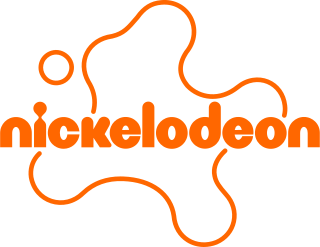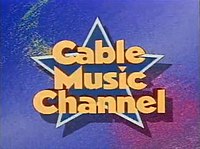
MTV is an American cable television channel. It was officially launched on August 1, 1981. Based in New York City, it serves as the flagship property of the MTV Entertainment Group, part of Paramount Media Networks, a division of Paramount Global.

TNT is an American basic cable television channel owned by the Warner Bros. Discovery Networks unit of Warner Bros. Discovery (WBD) that launched on October 3, 1988. TNT's original purpose was to air classic films and television series to which Turner Broadcasting maintained spillover rights through its sister station TBS. Since June 2001, the network has shifted its focus to dramatic television series and feature films, along with some sporting events, as TBS shifted its focus to comedic programming.

VH1 is an American basic cable television network based in New York City. It was created by Warner-Amex Satellite Entertainment, at the time a division of Warner Communications and the original owner of MTV, and launched on January 1, 1985, in the former space of Turner Broadcasting System's short-lived Cable Music Channel. The channel is currently owned by Paramount Global.

Turner Broadcasting System, Inc. was an American television and media conglomerate founded by Ted Turner in 1965. Based in Atlanta, Georgia, it merged with Time Warner on October 10, 1996. As of April 2022, all of its assets are now owned by Warner Bros. Discovery (WBD). The headquarters of Turner's properties are largely located at the CNN Center in Downtown Atlanta, and the Turner Broadcasting campus off Techwood Drive in Midtown Atlanta, which also houses Techwood Studios. Some of their operations are housed within WBD's corporate and global headquarters inside 30 Hudson Yards in Manhattan's West Side district, and at 230 Park Avenue South in Midtown Manhattan, both in New York City, respectively.

Much is a Canadian English language discretionary specialty channel owned by BCE Inc. through its Bell Media subsidiary that airs programming aimed at teenagers and young adults. Prior to 2013, the channel was officially known as MuchMusic, though "Much" has been the branding most commonly seen on-air since 1997.
Paramount Media Networks is an American mass media division of Paramount Global that oversees the operations of many of its television channels and online brands. Its related international division is Paramount International Networks.

The Movie Channel (TMC) is an American premium television network owned by Showtime Networks, a subsidiary of Paramount Global operated through its Paramount Media Networks division. The network's programming mainly features first-run theatrically released and independently produced motion pictures, and during promotional breaks between films, special behind-the-scenes features and movie trivia.

Frederick G. Seibert is an American television producer and media proprietor. He was the first employee and creative director of MTV in 1980, and later founded Frederator Studios in 1998, as well as its spin-off companies Frederator Networks, Channel Frederator Network, and Cartoon Hangover. Having held numerous executive positions for Viacom Media Networks, he was the final president of animation studio Hanna-Barbera from 1992 to 1996. He has since co-founded Next New Networks, Bolder Media, and the production company FredFilms by 2020.
In Demand is an American cable television service which provides video on demand services, including pay-per-view. Comcast, Cox Communications, and Charter Communications jointly own In Demand.

MTV Brasil was a Brazilian over-the-air television network owned by Grupo Abril focused on the youth and entertainment. The network was launched on 20 October 1990, as the first specialty television network to broadcast over-the-air, becoming the local version of MTV. It was the third MTV iteration launched in the world, and the first to broadcast via terrestrial television.

WPCH-TV, branded on-air as Peachtree TV, is a television station in Atlanta, Georgia, United States, affiliated with The CW. It is owned by locally based Gray Television alongside CBS affiliate and company flagship WANF, and low-power, Class A Telemundo affiliate WKTB-CD. WPCH-TV and WANF share studios on 14th Street Northwest in Atlanta's Home Park neighborhood; WPCH-TV's transmitter is located in the Woodland Hills section of northeastern Atlanta.

Nick Rocks: Video to Go, usually shortened to Nick Rocks, was a music video television series that aired on American cable channel Nickelodeon from 1984 to 1989. It featured pop and rock music videos over a 30-minute timeframe, presented in a countdown format. The show was typically hosted by a man identified on-air as "Joe from Chicago". Most episodes feature Joe traveling to various locations to hear viewers request specific music videos. Several guest hosts were featured over the program's run, such as The Monkees and They Might Be Giants.

Showtime Networks Inc. is an American entertainment company that oversees the company's premium cable television channels, including its flagship service Paramount+ with Showtime. It is a subsidiary of media conglomerate Paramount Global under its networks division.

Raechel Donahue is a rock radio pioneer generally associated with her husband Tom Donahue, who died in 1975. She was the original entertainment reporter for CNN, briefly served as VJ for Cable Music Channel and a longtime radio personality in San Francisco on KSAN and in Los Angeles on KMET, KROQ-FM, KIIS-FM, and in 2006 was heard on SIRIUS Satellite Radio (SIRIUS), Classic Vinyl and Sirus Gold.

MTV Tres is an American pay television network owned by Paramount Media Networks, a subsidiary of Paramount Global.
Scott M. Sassa is an American entertainment executive who has held a number of high-level executive positions in large entertainment companies. Sassa is currently chairman of MILK Makeup.

California Music Channel (CMC) is an American music video broadcast television network based in the San Francisco Bay Area. It is one of the longest running local music video television stations in the world. CMC has been broadcasting music videos over the air in the Bay Area since 1982. CMC has grown from an hour-long program to two 24/7 stations with digital simulcast capabilities. The live broadcasts feature on-camera disc jockeys, audience participation, and contemporary music videos. It is owned by CMC Broadcasting Company, Inc. CMC is carried as a Digital Broadcast Network nationally on LocalBTV, and locally on nine Northern California television stations including company owned and operated KTVJ-LD Boise, Idaho. CMC is also carried as a live linear channel on various Free ad-supported streaming television platforms and the California Music Channel App available for download to connected TVs and mobile devices.

QUBE was a former experimental two-way, multi-programmed cable television system that played a significant role in the history of American interactive television. It was launched in Columbus, Ohio, on 1 December 1977. Highly publicized as a revolutionary advancement, the QUBE experiment introduced viewers to several concepts that became central to the future development of TV technology: pay-per-view programs, special-interest cable television networks, and interactive services. It went defunct in 1984.

Nickelodeon is an American basic cable and satellite television network that is part of the Nickelodeon Group, a unit of the Paramount Media Networks division of Paramount Global, which focuses on programs for children and teenagers ages 2 to 17 years old.
Robert J. Wussler was a journalist, executive, and co-founder of CNN.
















